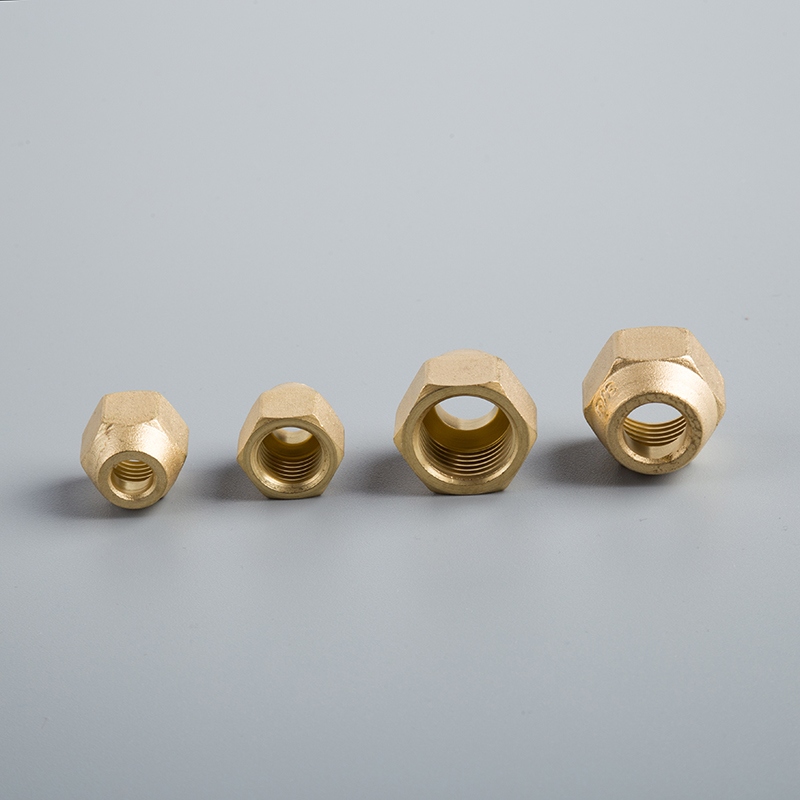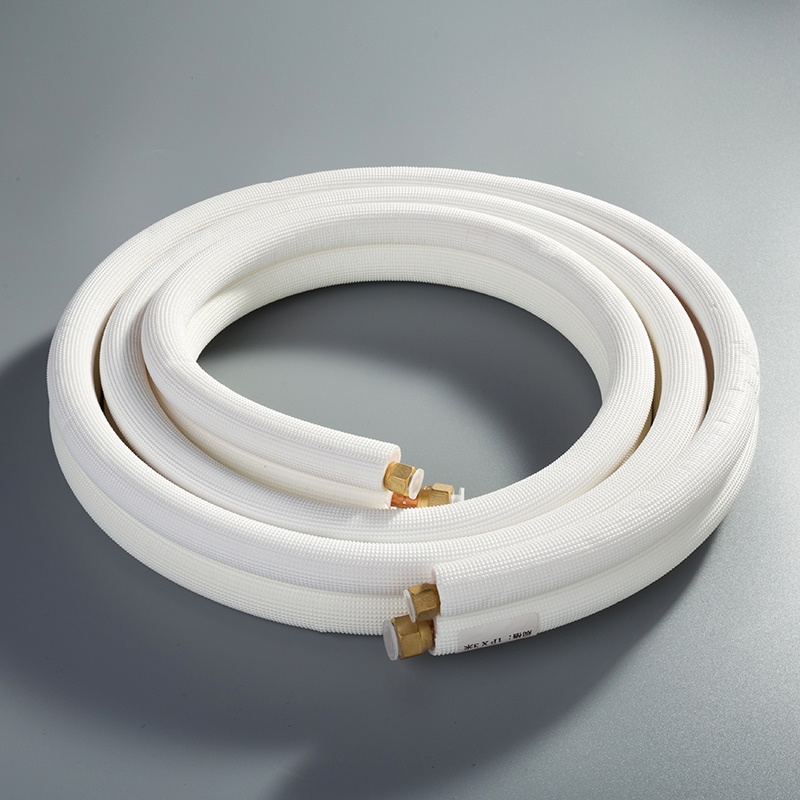Complete Guide to Choosing Copper Pipes for Air Conditioning

When it comes to air conditioning systems, the choice of copper pipes plays a pivotal role in ensuring optimal performance and longevity. This comprehensive Guide to Choosing Air Conditioning Copper Pipes delves into the nuances of selecting the right copper pipes for your HVAC needs. From exploring the various types of copper pipes to understanding their properties and advantages, this guide equips you with essential knowledge to make informed decisions. Discover the unparalleled benefits of utilizing copper pipes in air conditioning systems and elevate your cooling experience.
Understanding Copper Pipes
Types of Copper Pipes
Type K
Type K copper pipes are known for their durability and versatility in various applications. They are commonly used in plumbing systems where strength and reliability are crucial.
Type L
Type L copper pipes offer excellent corrosion resistance, making them ideal for long-term use in air conditioning systems. Their high-pressure rating ensures optimal performance.
Type M
Type M copper pipes are preferred for residential water supply applications due to their flexibility and superior heat transfer properties. They provide reliable connections and efficient water flow.
DWV (Drain, Waste, Vent)
DWV copper pipes play a vital role in drain, waste, and vent systems. Their corrosion-resistant nature ensures the smooth flow of waste materials without compromising the integrity of the system.
Properties of Copper Pipes
Durability
Copper pipes exhibit exceptional durability, ensuring long-term performance in HVAC systems. Their ability to withstand varying pressures and temperatures makes them a reliable choice for various applications.
Corrosion Resistance
Copper pipes are naturally resistant to corrosion, maintaining their structural integrity over time. This property is essential for ensuring the longevity of air conditioning systems.
Thermal Conductivity
The high thermal conductivity of copper pipes allows for efficient heat transfer within air conditioning systems. This property contributes to the overall energy efficiency of the cooling process.
Advantages of Using Copper Pipes in Air Conditioning
Longevity
The longevity of copper pipes ensures that air conditioning systems operate efficiently for extended periods without the need for frequent replacements. This reliability is essential for maintaining consistent cooling performance.
Efficiency
Copper pipes contribute to the overall efficiency of air conditioning systems by facilitating rapid cooling processes. Their ability to cool faster than alternative materials enhances the overall performance of HVAC units.
Safety
Utilizing copper pipes in air conditioning systems promotes safety by providing a durable and secure piping solution. The inherent strength of copper minimizes the risk of leaks or failures, enhancing operational safety.
Applications of Copper Pipes in Air Conditioning

Residential HVAC Systems
Copper pipes find extensive applications in residential HVAC systems, catering to both split systems and packaged systems. The utilization of copper pipes in these setups ensures efficient cooling operations and long-term performance.
Split Systems
Copper pipes play a crucial role in split systems by facilitating the transfer of refrigerant between the indoor evaporator coil and the outdoor condensing unit. This seamless flow of refrigerant is essential for maintaining optimal cooling efficiency throughout the residence.
Packaged Systems
In packaged systems, copper pipes are instrumental in connecting the central unit that houses all components to the ductwork or ventilation system. The durability and thermal conductivity of copper ensure that the refrigerant flows smoothly, contributing to consistent cooling performance.
Commercial HVAC Systems
Commercial HVAC setups benefit significantly from the versatility and reliability of copper pipes, particularly in centralized systems and decentralized systems. The use of copper piping enhances operational efficiency and minimizes maintenance requirements.
Centralized Systems
Copper pipes serve as the backbone of centralized HVAC systems, where they transport refrigerant from a single point to various zones within commercial buildings. This streamlined distribution system optimizes cooling processes and reduces energy consumption.
Decentralized Systems
Decentralized HVAC configurations leverage copper pipes to connect individual units or zones directly to outdoor condensers or chillers. This decentralized approach offers flexibility in cooling specific areas without affecting overall system performance, making it a preferred choice for commercial spaces with varying cooling needs.
Industrial HVAC Systems
Industrial air conditioning demands robust solutions, making copper pipes indispensable for large-scale cooling applications and specialized applications within industrial settings. The reliability and efficiency of copper piping support continuous operation under demanding conditions.
Large-scale Cooling
For industrial facilities requiring substantial cooling capacity, copper pipes provide an ideal solution due to their high heat transfer capabilities. These pipes ensure rapid cooling across extensive areas, maintaining optimal temperature levels for industrial processes.
Specialized Applications
In specialized industrial environments such as data centers or manufacturing plants, copper pipes offer precise temperature control and reliable refrigerant transportation. Their corrosion resistance and durability make them suitable for challenging operating conditions where consistent cooling is paramount.
Best Practices for Choosing Copper Pipes

Assessing Your Needs
To ensure the optimal selection of copper pipes for air conditioning systems, Assessing Your Needs is a critical initial step. Understanding your System Requirements and considering Budget Considerations are fundamental aspects that influence the decision-making process.
System Requirements
Evaluate the specific demands of your HVAC setup to determine the most suitable copper pipe type.
Consider factors such as internal water pressure handling, mechanical damage resistance, flow rate, bending and forming capabilities, corrosion resistance, and pressure rating.
Differentiate between various copper tube types (L vs K vs M) based on their performance in HVAC systems to make an informed choice.
Budget Considerations
Compare the cost-effectiveness of different copper pipe types to align with your financial constraints.
Analyze the key differences in wall thickness, applications, strength, and cost among Types of Copper Piping (K, L, M) to make a cost-efficient decision.
Ensure that you prioritize durability and efficiency while balancing the overall cost implications.
Comparing Copper Pipe Types
When selecting copper pipes for air conditioning applications, understanding the nuances of each type is essential. By comparing Copper Pipe Types, you can make an informed decision based on specific requirements and performance expectations.
Cost Comparison
Evaluate the cost variations between different types of copper piping to determine the most economical option.
Consider factors such as wall thickness to diameter ratio, applications, strength, and overall cost implications when comparing various pipe types.
Performance Comparison
Assess the performance attributes of each copper pipe type to ensure optimal functionality in air conditioning systems.
Focus on key differences in thickness variations, applications, and suitability for specific projects to enhance system efficiency.
Installation Tips
Proper installation is crucial for maximizing the effectiveness of copper pipes in air conditioning setups. By following essential Installation Tips, you can enhance system performance and longevity while ensuring efficient cooling operations.
Proper Sizing
Select the appropriate size of copper pipes based on system requirements to optimize refrigerant flow.
Ensure that 1/2" copper pipe is utilized for suction lines in 1 ton and 1.5 ton AC units for efficient cooling processes.
Joining Techniques
Implement reliable joining techniques such as brazed joints to connect copper tubes securely without compromising durability.
Utilize compression fittings as a solder-free method for joining copper pipes in air conditioning systems efficiently.
Insulation
Insulated line set covers should be used to protect ductless AC pipes outside from weather conditions and UV rays effectively.
FAQs about Copper Pipes for Air Conditioning
Common Questions
Determining the Right Type of Copper Pipe
To select the optimal copper pipe for air conditioning systems, consider the specific requirements of your HVAC setup. Evaluate factors such as internal water pressure handling, mechanical damage resistance, flow rate, bending and forming capabilities, corrosion resistance, and pressure rating. By understanding these key aspects, you can make an informed decision on the most suitable type of copper pipe to enhance system performance and longevity.
Maintenance Requirements
Maintaining copper pipes in air conditioning systems is essential to ensure their continued efficiency and durability. Regular inspections are crucial to identify any potential issues early on. Implementing preventive maintenance measures can help prevent costly repairs in the future. Additionally, monitoring the overall condition of the pipes and addressing any signs of wear or damage promptly can extend their lifespan and optimize their performance over time.
Troubleshooting Issues
Identifying Leaks
In air conditioning systems utilizing copper pipes, identifying leaks promptly is vital to prevent further damage and maintain system integrity. Look for visible signs of leakage such as moisture accumulation or water stains near the piping connections. Conduct regular inspections to detect leaks early on and address them promptly to avoid potential disruptions in cooling operations.
Addressing Corrosion
Corrosion can compromise the structural integrity of copper pipes in air conditioning systems if left unchecked. Implementing corrosion prevention strategies such as proper insulation and routine maintenance can help mitigate this issue. Regularly inspecting the pipes for signs of corrosion, such as discoloration or pitting, allows for timely intervention to prevent extensive damage and ensure long-term functionality.
Testimonials:
HVAC Specialist: "Copper pipes excel in withstanding varying pressures and temperatures while maintaining optimal performance levels."
Recapping the essential aspects of selecting copper pipes for air conditioning systems ensures optimal performance and longevity. When choosing the right copper pipes, prioritize durability, efficiency, and safety to elevate your HVAC experience. Consulting with professionals can provide valuable insights tailored to your specific needs, enhancing the effectiveness of your cooling setup. Your feedback is valuable; feel free to share comments or questions to further enrich your understanding of copper piping in air conditioning systems.
See Also
The Benefits of Selecting Copper Tubing for Air Conditioning
The Importance of Pure Copper Tubing for Effective Air Conditioning
The Transformation of Air Conditioning with Pure Copper Tubing
A Comprehensive Handbook for Preserving Copper Tubing Efficiency
Key Advantages of Copper Tubing in Revolutionizing Air Conditioning


